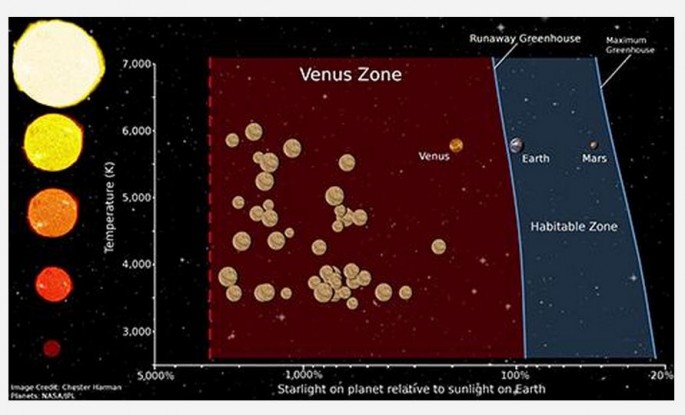Scientists are beginning to search for "Venus Zones" in solar systems with exoplanets to facilitate the search for extraterrestrial life.
The Venus Zone is a new concept that assists scientists better identify which exoplanets in a habitable zone have the best chance of supporting life. Planets outside a Venus Zone have a better chance of supporting life than planets found within this zone.
That's because the Venus Zone is the region around a star where an exoplanet's atmosphere is destroyed by runaway greenhouse gases that superheat the planet.
"The primary purpose of the habitable zone is target selection," said planetary scientist Stephen Kane of San Francisco State University who proposed the establishment of a "Venus Zone".
Scientists hoping to find Earth-like planets do extensive follow-up searches on planetary candidates in the habitable zone. The establishment of a Venus Zone is expected to help narrow down the inner edge of potential habitability.
Scientists believe a planet within the Venus Zone might have formed an ocean some time in its history. Venus is thought to have had surface water until one billion years ago, at which point it lost its liquid to space.
Kane said the point at which a planet loses its oceans is the outer edge of the Venus Zone and is the inner boundary of the habitable zone.
He pointed out losing liquid water curtails the carbon cycle of a planet, allowing more CO2 to build up in the atmosphere. Higher CO2 levels kick-off a runaway greenhouse effect that superheats the planet, rendering it unsuitable for life.
Identifying the Venus Zone helps eliminate Venus-like planets from planets that might be more habitable.
Kane also said he and his colleagues were specifically trying to make it clear that size is no indication of habitability.
Scientists now aim to better understand how common Earth-size planets are in the habitable zones of other stars. To date, NASA's Kepler space telescope has identified more than 4,100 exoplanets, said Phys.org.



























